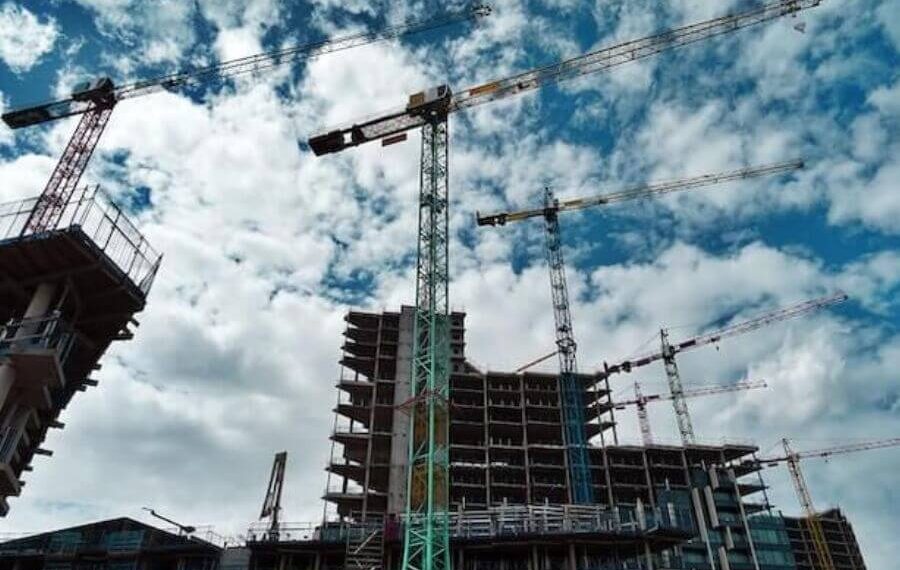Delays can significantly impact construction projects, leading to disruptions and financial consequences. Whether you have worked on a small-scale project or a multibillion-dollar infrastructure development, chances are you have encountered delays and extension of time claims from contractors.
The assessment of delays can be conducted using different methodologies, including, but no limited to, the following:
- As-Planned vs. As-Built Analysis
- Impacted As-Planned Analysis
- Windows Analysis
- Time Impact Analysis
Each of these methods offer a slightly different approach to identify and assess, and allocate responsibility for extension of time delay claims. As a consequence, each methodology will come with its own advantages and drawbacks. In this blog post, we will explore the unique characteristics and considerations of each method.
When To Use Each Delay Analysis Method?
Understanding when to use each delay analysis method and the key considerations involved is crucial for effectively assessing delays in construction projects. One of the key aspects to considered in your choice is the amount and quality of data available for your analysis.
The table below summarises when each delay is mostly used, the information required to successfully implement then, and some key considerations. The following sections details further each methodology.
| Delay Analysis Method | Best Suited For | Information Needed | Key Considerations |
|---|---|---|---|
| As-Planned vs. As-Built | Comparing planned vs. actual progress | As-planned schedule, as-built records, changes/modifications documentation | Accurate schedules, detailed records, baseline understanding |
| Impacted As-Planned | Isolating specific delay events | Project records, delay event documentation, baseline schedule | Detailed records, causation links, baseline understanding |
| Windows Analysis | Evaluating effects of overlapping delays | Project records, defined time periods, overlapping delay information | Defined analysis windows, accurate data |
| Time Impact Analysis | Assessing impact of specific delay events | As-built records, baseline schedule, critical activity information | As-built records, baseline understanding, critical activity identification |

Delay Analysis Method #1 - As-Planned vs. As-Built
The As-Planned vs. As-Built approach helps to identify deviations, assess the impact of delays, and determine accountability for schedule variances by comparing the planned activities and their scheduled durations with the as-built conditions and actual durations.
For effective As-Planned vs. As-Built analysis, it is essential to have an accurate as-planned schedule and detailed as-built records. The as-planned schedule serves as the baseline against which the actual project progress is measured. Is essential that the as-built records clearly capture and records the actual progress, including any modifications, changes, or deviations from the original plan.
By meticulously examining the as-planned schedule and comparing it with the as-built records, the delay analyst can determine the extent and impact of delays.
As detailed in the table above, to undertake a thorough analysis, it is essential to have in hands:
- The baseline program
- Construction Records, such as variation orders, changes in the design, directions received, photos / timelapse, progress of works records, etc.)
Delay Analysis Method #2 - Impact as-planned
The Impact As-Planned delay analysis method is a valuable approach used in construction projects to isolate specific delay events and quantify their impact on the project schedule.
It requires a clear understanding of the causation links between the delays and their effects. This involves tracing the cause-and-effect relationship between the identified delays and the resulting schedule impacts.
By examining the project records and identifying causation links between delays and their effects, this approach helps the delay analyst to understand the extent to which events have affected the planned schedule.
To conduct an effective Impact As-Planned analysis, it is crucial to have detailed project records and a comprehensive understanding of the baseline schedule. These records provide the necessary documentation to identify and document the specific delay events and their associated impacts.
Delay Analysis Method #3 - Window Analysis
The Window Analysis delay analysis method is a valuable approach used in construction projects to evaluate the effects of overlapping delays within defined analysis windows.
They are commonly associated with concurrent delays analysis and supports planners to identify the cumulative impact of concurrent delays and understand their effects on the project schedule.
Read our detailed article on the topic: What is the Window Analisys Method? (And When to Use It)
To conduct an effective Window Analysis, it is essential to define specific analysis windows that align with the overlapping periods of delays. These windows allow stakeholders to focus on the simultaneous delays and their combined effects, and identify potential casual links.
By examining the project records and overlapping delay information within the defined windows, the parties involved in the assessment can identify the extent to which concurrent delays have affected the project timeline.
In summary, the Window Analysis delay analysis method enables the relevant parties to evaluate the effects of overlapping delays by focusing on specific analysis windows.
Delay Analysis Method #4 - Time Impact Analysis (TIA)
Time Impact Analysis (TIA) is another method for assessing the impact of specific delays on construction project schedules. An effective Time Impact Analysis (TIA) will need detailed project records are essential, which includes schedules, progress reports, and documentation of delay events.
The analysis involves evaluating the critical path and identifying changes to activity durations and relationships. By understanding the interconnected nature of the project tasks, stakeholders can quantify the time impact of delays and identify responsible parties for each delay event.
Time Impact Analysis is particularly beneficial when there are multiple delays or changes throughout the project. It enables stakeholders to assess the cumulative impact, aiding in claims resolution and effective contract management.

FAQ
Q: What are the key considerations when choosing a delay analysis method?
One of the key considerations when choosing a delay analysis method is the amount and quality of data available for analysis. The methodology selected should align with the available project records and documentation. Additionally, understanding the specific needs of the project and the desired outcome of the analysis is important in making an informed choice.
Q: What are the most commonly used methods of concurrent delay analysis?
The most commonly used methods of concurrent delay analysis include the Window Analysis method and. This methods focus on evaluating the effects of overlapping delays and understanding their cumulative impact on the project schedule.
Q: What is the difference between critical delays and concurrent delays?
A critical delay refers to a delay that affects the project’s critical path, causing a direct impact on the project’s completion date. It extends the overall project duration.
On the other hand, a concurrent delay occurs when multiple delays are happening at the same time, independent of the critical path. While a concurrent delay may not directly affect the project’s completion date, it can still have an impact on overall project performance and costs.
Conclusion
Delays in construction projects can have significant consequences, both in terms of disruptions and financial implications. To effectively assess and allocate responsibility for project delays, various delay analysis methods are available. Each method offers a slightly different approach, taking into account the unique characteristics and considerations of the project.
By selecting the right delay analysis method and conducting a thorough analysis using accurate project records and documentation, stakeholders can gain insights into the extent of delays, establish causation links, and make informed decisions to manage and mitigate their effects. Effective delay analysis is crucial for successful project management, claims resolution, and maintaining project timelines.
If you need help with on assessing and/or submitting your extension of time claims, do not hesitate to contact us (click here) and we will be happy to provide the required support.













